This is a very thorough and extensive 35 page website about allopathic, holistic and integrative veterinary, cat / dog nutrition and what BigPharmaMafia, bad veterinarians and pet food companies who make very low-quality pet foods don’t or won’t tell you. It will always be a work in progress. The site is sometimes intentionally provocative & outspoken in order to disturb the status quo, which needs to be educated and must be changed! All of the information on this website is fact and has been extensively researched, sourced and documented and is extremely well received by both good veterinarians and pet parents, having had 500,000 hits in a single day!
Grains are Very, Very Bad for Your Obligate Carnivore Cat, Carnivore Dog
Grains are one of the worst ingredients for cats (obligate carnivores) and dogs (carnivores). They need meat, not harmful fillers like grains.

Roger Biduk: Grains are Very, Very Bad for Your Obligate Carnivore Cat, Carnivore Dog
Jun 24th
 “This is very easy to understand,” says Roger Biduk. “According to the Association for Pet Obesity Prevention (APOP) 55 percent of adult cats and 53 percent of adult dogs and are officially overweight or obese. This isn’t because they eat too much or don’t get enough exercise, it’s 100% because of dangerous and cheap fillers like grains, corn and other garbage ingredients that are loaded with carbohydrates (starches and sugars) in store-bought and veterinarian-sold kibble (i.e. Hill’s Prescription Diets) I don’t have to worry about that… my Siberian Husky is the healthiest dog around because he’s fed a 100% balanced, enzyme-rich raw-meat diet and unlike 90% of pet owners I will never, ever have to bring him to see a veterinarian because of a food-related illness or disease leading to premature death!”.
“This is very easy to understand,” says Roger Biduk. “According to the Association for Pet Obesity Prevention (APOP) 55 percent of adult cats and 53 percent of adult dogs and are officially overweight or obese. This isn’t because they eat too much or don’t get enough exercise, it’s 100% because of dangerous and cheap fillers like grains, corn and other garbage ingredients that are loaded with carbohydrates (starches and sugars) in store-bought and veterinarian-sold kibble (i.e. Hill’s Prescription Diets) I don’t have to worry about that… my Siberian Husky is the healthiest dog around because he’s fed a 100% balanced, enzyme-rich raw-meat diet and unlike 90% of pet owners I will never, ever have to bring him to see a veterinarian because of a food-related illness or disease leading to premature death!”.
Dr. Elizabeth Hodgkins, DVM, does not mince words about the connection between grains in cat food and feline diabetes. On her fabulous website she states, “Feline diabetes is not the natural fate of hundreds of thousands of pet cats world-wide. It is, rather, a human-created disease that is reaching epidemic proportions because of the highly artificial foods that we have been feeding our feline companions for the past few decades. Without the 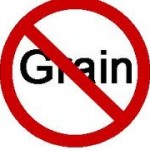 constant feeding of highly processed, high carbohydrate dry foods better suited to cattle than cats, adult-onset feline diabetes would be a rare disease, if it occurred at all.
constant feeding of highly processed, high carbohydrate dry foods better suited to cattle than cats, adult-onset feline diabetes would be a rare disease, if it occurred at all.
“A highly processed, grain-based diet fed to an animal designed to thrive on a meat-based, fresh food diet is very likely to produce symptoms of ill health over time. Diets to address disease most frequently deal with the symptoms that are the result of a lifetime of inappropriate food, not the true cause of their symptoms.
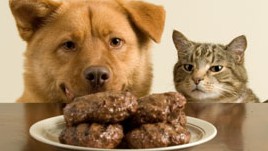 “The optimum diet for a dog or a cat should closely resemble their natural diet.
“The optimum diet for a dog or a cat should closely resemble their natural diet.
A diet balanced heavily toward grain promotes insulin production and the production of inflammatory chemicals. Over-production of insulin makes it hard for the body to maintain its correct weight, and can lead to diabetes and other problems. An overabundance of inflammatory chemicals means more aches and pains.”
What do farmers feed hogs and cattle to fatten them up for market? Carbohydrates!!! Grains and Corn. That is what most pet food consists of. Carbs just make you hungry because they all turn to sugar in our systems (and also in dogs and cats).
Read Grains in Commercial Pet Foods… Why?
“Grains are not needed, digestible or good for our carnivorous pets.” Dr. Jeannie Thomason, CVND. Read More on Grains.
On the American Veterinary Medical Association (AVMA) recently telling veterinarians to discourage pet owners from feeding raw petfood diets: “Sorry, AVMA, you are all wet on this one. My own raw fed dogs have been healthier for the past 20 years than my clients’ dog food eating dogs. Are we veterinarians promoting health or the pet food industry, with all its recalls, Chinese ingredients, and biologically inappropriate diets? 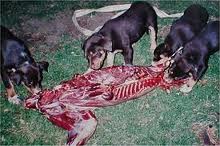 And why in the world is AVMA worrying about what perhaps 2.5% of the pet food market does? Surely there are serious problems affecting more pets than this… how about the jerky treats from China that are actually killing dogs, which FDA refuse to order recalled.” Dr. Laurie S. Coger, DVMwww.WholisticVet.com
And why in the world is AVMA worrying about what perhaps 2.5% of the pet food market does? Surely there are serious problems affecting more pets than this… how about the jerky treats from China that are actually killing dogs, which FDA refuse to order recalled.” Dr. Laurie S. Coger, DVMwww.WholisticVet.com
You’ve probably heard some veterinarian, pet food manufacturer or  someone in conversation say that grains (rice, barley, oats, etc.) are very good ingredients in cat and dog foods, are easy to digest and will give your cats and dogs “energy & vitality”. I certainly have.
someone in conversation say that grains (rice, barley, oats, etc.) are very good ingredients in cat and dog foods, are easy to digest and will give your cats and dogs “energy & vitality”. I certainly have.
You also may have heard from those same sources that dogs are omnivores and not carnivores.
You’ll know different after reading on!
In the wild, the diet of a canine/feline consists of only meat. As pets, dogs may eat foods that contain some vegetables (cats should not) that are given to them by humans but not nearly enough to classify them as omnivores, and grains definitely have never been, are not now nor will they ever, ever be a part of a dog or cat`s natural diet. Humans are much more “omnivorous” than dogs will ever be.
Because cats are obligate carnivores, they shouldn’t eat anything but meat; no fruits, no vegetables and absolutely never, ever any grains!
 Since the beginning of time, carnivores have eaten only meat.
Since the beginning of time, carnivores have eaten only meat.
You MUST ALWAYS keep in mind that to stay healthy and to live a long life (along with staying out of the vet’s office), carnivores (dogs) and obligate carnivores (cats) need to eat meat, meat and more meat!
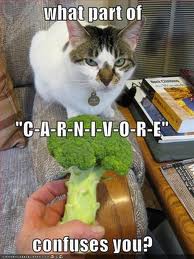 Cats are members of the family “felidae”, the strictest carnivores (obligate carnivores) of the sixteen mammal families in the order Carnivora.
Cats are members of the family “felidae”, the strictest carnivores (obligate carnivores) of the sixteen mammal families in the order Carnivora.
The dog family is a group of intelligent, carnivorous mammals that includes domestic dogs and their relatives which include coyotes, wolves, foxes, jackals, dholes, raccoon dogs and bush dogs.
They’re known scientifically as Canidae, are definitely carnivores and its members are commonly called canids and are members of the order Carnivora.
Herbivores like goats, sheep, cows and horses eat grains (but only in captivity).
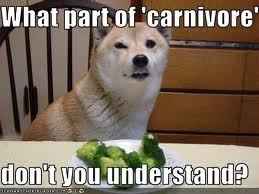 However, horses, cows, pigs, goats and rabbits only eat grains when they are fed to them by humans, usually to fatten them up. Normally, they would eat grasses and leaves from pastures and other vegetables. There are NO mammals who eat a significant amount of grain as part of their natural diet, including humans.
However, horses, cows, pigs, goats and rabbits only eat grains when they are fed to them by humans, usually to fatten them up. Normally, they would eat grasses and leaves from pastures and other vegetables. There are NO mammals who eat a significant amount of grain as part of their natural diet, including humans.
GRAINS NOT GREAT FOR HUMANS EITHER
 That includes humans up until the last ten thousand years or so (the advent of agriculture) and that quantity was still much, much lower than it was after the industrial revolution. It then grew progressively worse as low fat diets that suggested more grains were promoted by U.S. and other governments, right in line with “the obesity crisis” and Type II Diabetes!
That includes humans up until the last ten thousand years or so (the advent of agriculture) and that quantity was still much, much lower than it was after the industrial revolution. It then grew progressively worse as low fat diets that suggested more grains were promoted by U.S. and other governments, right in line with “the obesity crisis” and Type II Diabetes!
According to a growing number of experts including Dr. Loren Cordain, a professor at Colorado State University and an expert on Paleolithic lifestyles, humans are NOT designed to eat grains, and doing 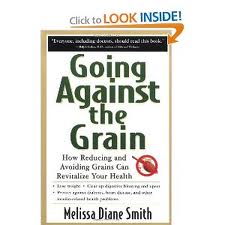 so may actually be damaging to your gut. Dr. Cordain explains: “There’s no human requirement for grains. That’s the problem with the USDA recommendations. They think we’re hardwired as a species to eat grains. You can get by just fine and meet every single nutrient requirement that humans have without eating grains. And grains are absolutely poor sources of vitamins and minerals compared to fruits, vegetables, meat and fish.” You can read more on this here.
so may actually be damaging to your gut. Dr. Cordain explains: “There’s no human requirement for grains. That’s the problem with the USDA recommendations. They think we’re hardwired as a species to eat grains. You can get by just fine and meet every single nutrient requirement that humans have without eating grains. And grains are absolutely poor sources of vitamins and minerals compared to fruits, vegetables, meat and fish.” You can read more on this here.
DR. MERCOLA: ELIMINATE GRAINS FROM YOUR DIET!
Dr. Joseph Mercola, MD, DO, State of Illinois Licensed Physician and Surgeon, Board Certified American College Osteopathic General Practitioners, Board Certified in Family Medicine, Fellow of the American College of Nutrition (ACN):
 “Carbohydrates provide fuel for your body in the form of glucose or sugar. There are two types of carbohydrates — simple and complex. Simple carbohydrates are sugars, such as the ones found in candy, fruits and baked goods. Complex carbohydrates are starches found in beans, nuts, vegetables and whole grains.
“Carbohydrates provide fuel for your body in the form of glucose or sugar. There are two types of carbohydrates — simple and complex. Simple carbohydrates are sugars, such as the ones found in candy, fruits and baked goods. Complex carbohydrates are starches found in beans, nuts, vegetables and whole grains.
“Two-thirds of Americans are either obese or overweight. We have an epidemic on our hands! This is the result of eating far too many processed foods and believing the low-fat diet myth. If this is new information for you, it will be very important to read one of the most important articles on this site, Reduce Grains and Sugar to Lose Weight and Improve Health, which discusses the reasons you need to radically reduce the amount of grains in your diet.
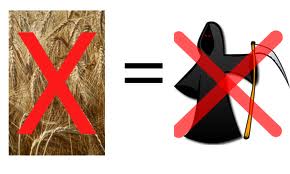 “What most people don’t know is that you don’t actually need carbohydrates — they are not essential for survival and the RDA for carbs is actually zero. If you ate no carbohydrates, like many traditional Eskimos do, you would survive as long as you had enough high-quality protein, fat, water and minerals. This is not true for any other nutrient. However, we do not at all recommend avoiding all carbohydrates as an ideal diet includes healthy carbs, just much less than the average adult consumes.
“What most people don’t know is that you don’t actually need carbohydrates — they are not essential for survival and the RDA for carbs is actually zero. If you ate no carbohydrates, like many traditional Eskimos do, you would survive as long as you had enough high-quality protein, fat, water and minerals. This is not true for any other nutrient. However, we do not at all recommend avoiding all carbohydrates as an ideal diet includes healthy carbs, just much less than the average adult consumes.
 “While both grains and vegetables are carbohydrates, most grains should be avoided and most vegetables are acceptable. Your body prefers the carbohydrates in vegetables rather than grains because it slows the conversion to simple sugars like glucose, and decreases your insulin level. Grain carbohydrates, on the other hand, will increase your insulin levels and interfere with your ability to burn fat.
“While both grains and vegetables are carbohydrates, most grains should be avoided and most vegetables are acceptable. Your body prefers the carbohydrates in vegetables rather than grains because it slows the conversion to simple sugars like glucose, and decreases your insulin level. Grain carbohydrates, on the other hand, will increase your insulin levels and interfere with your ability to burn fat.
“Avoiding grains frequently causes weight loss. One of the main reasons for this weight loss effect is due to the stabilizing of leptin — a hormone that sends signals to your body to reduce hunger, increase fat burning and reduce fat storage. When your cells are communicating properly they can “hear” this message.
“If you eat a diet that is high in fructose and grains, however, the fructose gets metabolized to fat (and is stored in your fat cells), which in turn releases surges in leptin. Over time, if your body is exposed to too much leptin, it will become resistant to it (just as your body can become resistant to insulin).
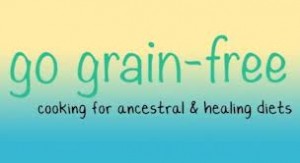 “And when you become leptin-resistant, your body can no longer hear the messages telling it to stop eating and burn fat — so it remains hungry and stores more fat. Leptin-resistance also causes an increase in visceral fat, sending you on a vicious cycle of hunger, fat storage and an increased risk of heart disease, diabetes, metabolic syndrome and more.
“And when you become leptin-resistant, your body can no longer hear the messages telling it to stop eating and burn fat — so it remains hungry and stores more fat. Leptin-resistance also causes an increase in visceral fat, sending you on a vicious cycle of hunger, fat storage and an increased risk of heart disease, diabetes, metabolic syndrome and more.
“When you reduce your intake of grains, your body will become progressively better able to hear the leptin signals again, telling it to burn more fat and reduce your fat stores.“
“Remember, NOTHING, NOTHING, NOTHING is more important in determining the health and lifespan of your animal companion than the ingredients in the food you give them. It’s YOUR RESPONSIBILITY as a pet parent”, says Roger Biduk.
THE ANATOMY OF EATING
Carnivore means ‘meat eater’ (Latin carne meaning ‘flesh’ and vorare meaning ‘to devour’) and classifies animals whose diets consist mainly of meat – such as dogs and cats.
 As a faithful companion to humans for some 10,000 years, the trend to humanize our companion dogs comes as no surprise. Yet despite his long and close association with humans, the dog remains closest genetically to the Gray wolf, with whom he shares 99.8% of his mitochondrial DNA. The close genetic relationship between dog and wolf led the Smithsonian Institution to reclassify the dog from its previous separate species designation of Canis familiaris to Canis lupus familiaris.
As a faithful companion to humans for some 10,000 years, the trend to humanize our companion dogs comes as no surprise. Yet despite his long and close association with humans, the dog remains closest genetically to the Gray wolf, with whom he shares 99.8% of his mitochondrial DNA. The close genetic relationship between dog and wolf led the Smithsonian Institution to reclassify the dog from its previous separate species designation of Canis familiaris to Canis lupus familiaris.
 In other words, the Timber wolf, the Tundra wolf and our beloved companion dog all fall under the genetic umbrella of the Gray wolf, Canis lupus. To answer the question “is my dog a domesticated wolf?” Yes, he/she certainly is!
In other words, the Timber wolf, the Tundra wolf and our beloved companion dog all fall under the genetic umbrella of the Gray wolf, Canis lupus. To answer the question “is my dog a domesticated wolf?” Yes, he/she certainly is!
Read my webpage “Your Dog is a Carnivore and a Domesticated Wolf“
Just like wolves, all dogs are evolved as carnivores and are still carnivores, NOT omnivores like humans, with anatomical features that clearly adapt them for meat-based diets. Understanding the anatomical differences between carnivores, omnivores and herbivores will help you understand why dogs are classified as carnivores and cats as obligate carnivores, and what foods best match their anatomy.
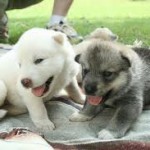 In addition, cats and dogs have certain defenses that enable them to handle bacteria in a different way than humans do. A shorter digestive track and a more acidic PH in their stomachs create a very, very powerful mechanism of defense against harmful bacteria.
In addition, cats and dogs have certain defenses that enable them to handle bacteria in a different way than humans do. A shorter digestive track and a more acidic PH in their stomachs create a very, very powerful mechanism of defense against harmful bacteria.
“Why does every zoo in the world only feed the big cats… lions, tigers, cheetahs and lynx (all come under the exact same family, Felidae, as your pet cat) slabs of raw meat and NEVER grains, corn, wheat and soy that the AVMA, AAHA and unethical vets recommend? Why do those same zoos only feed slabs of raw meat to coyotes, foxes, jackals and wolves (99.8% related to your pet dog) while the unethical AVMA, AAHA and unethical veterinarians condemn a raw meat diet and recommend junk-filled kibble loaded with grains, corn, wheat, soy and little or even NO meat”, asks Roger Biduk.
Here’s three reasons why grains have no business being fed to cats (obligate carnivores) and dogs (carnivores) and are the diet of herbivores (cows, horses, sheep, rabbits and goats) in captivity:
 1) SHARP TEETH designed for slicing meat, not for grinding grains or plants!
1) SHARP TEETH designed for slicing meat, not for grinding grains or plants!
Going back tens of thousands of years to the sabre-toothed tiger to today, carnivores (dogs) and obligate carnivores (cats) still have elongated teeth designed for tearing and killing prey. Their molars are still triangular with jagged edges that function like serrated-edged blades that give a smooth cutting motion like the blades on a pair of shears. These teeth are totally useless for chewing grains and kibble but perfectly made for biting into, ripping and swallowing meat.
Cats and dogs don’t chew, they chop their food. Like all carnivores going  back to the tyrannosaurus rex, the jaws of dogs and cats operate vertically (unlike herbivores and omnivores that grind their food by side to side chewing) to provide a smooth cutting motion, and open widely to swallow large chunks of meat. It’s the perfect combination for cutting meat into smaller chunks and the absolute worst for chewing grains.
back to the tyrannosaurus rex, the jaws of dogs and cats operate vertically (unlike herbivores and omnivores that grind their food by side to side chewing) to provide a smooth cutting motion, and open widely to swallow large chunks of meat. It’s the perfect combination for cutting meat into smaller chunks and the absolute worst for chewing grains.
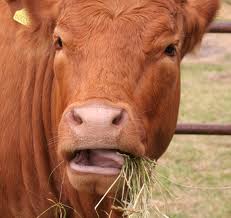 Herbivores (cows) on the other hand chew widely from side-to-side. They have broad, flat back teeth that are ideal for grinding grains and plant material into finer particles. That’s why a cow “chews its cud”.
Herbivores (cows) on the other hand chew widely from side-to-side. They have broad, flat back teeth that are ideal for grinding grains and plant material into finer particles. That’s why a cow “chews its cud”.
2) The digestive anatomy of carnivores are totally different than those of herbivores and omnivores.
Because meat is easily digested (plants and grains are not) the small intestines 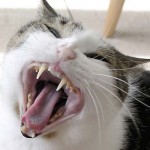 of carnivores are very short. Carnivores have a very short gastrointestinal (GI) tract (around three times their body length), with food often staying in a cat for only five to seven hours and nine to eleven hours in a dog. So it’s very, very important to give them a high protein, calorie-dense diet because they absorb the nutrients so fast. High fiber, carbohydrate laden foods with grains ignore this fact, providing an unnatural burden on the GI tract that results in excessive system bulk and reduced nutrient absorption.
of carnivores are very short. Carnivores have a very short gastrointestinal (GI) tract (around three times their body length), with food often staying in a cat for only five to seven hours and nine to eleven hours in a dog. So it’s very, very important to give them a high protein, calorie-dense diet because they absorb the nutrients so fast. High fiber, carbohydrate laden foods with grains ignore this fact, providing an unnatural burden on the GI tract that results in excessive system bulk and reduced nutrient absorption.
What’s more, carnivores exhibit a much higher concentration of stomach acid which allows for faster digestion of animal protein. The stronger acid  kills the disease-causing bacteria abundant in decaying meat. A high concentration of stomach acid helps quickly break down proteins (carnivores have a stomach acidity of about pH 1, compared to humans at pH 4 to 5).
kills the disease-causing bacteria abundant in decaying meat. A high concentration of stomach acid helps quickly break down proteins (carnivores have a stomach acidity of about pH 1, compared to humans at pH 4 to 5).
In addition to the acid, dogs and cats also naturally produce a tremendous amount of bile. Bile is both anti-parasitic and anti-pathogenic. So if something potentially harmful isn’t entirely neutralized by stomach acid, the bile is a secondary defense. And your pet’s powerful pancreatic enzymes also help break down and digest food.
Dogs and cats are built to handle bacterial loads from food that would cause significant illness in you or me. Your pet’s body is well equipped to deal with heavy doses of familiar and strange bacteria because nature built them to catch, kill and immediately consume their prey.
So the next time you hear some “expert” say raw meat is dangerous to give to your cat or dog, shake your head at their ignorance and quickly walk (run) away from them… after all, carnivores have only been thriving on eating only or mainly raw meat for the last 40 millions years or so!
Herbivores have a gastrointestinal tract that’s unusually long, sometimes 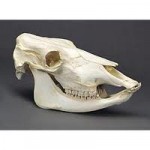 exceeding twelve times the animal’s body length. Longer systems like this are needed for consuming a grain and plant-based diet. Cows, for example have one stomach with three compartments.
exceeding twelve times the animal’s body length. Longer systems like this are needed for consuming a grain and plant-based diet. Cows, for example have one stomach with three compartments.
3) Last but certainly not least and very, very, very important, herbivores and omnivores (including humans) have one very, very, very powerful digestive weapon that dogs and cats do NOT have… Salivary amylase.
Salivary amylase is a special enzyme that grain and plant-eating animals (and humans) produce in their saliva. Because grains are so hard to digest (contrary to what some “experts” say), it’s a most critical enzyme that catalyses the breakdown of starch into sugars. In the saliva, amylase begins the chemical process of digestion needed to initiate the break down of starchy carbohydrates before they enter the stomach.
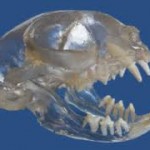 Dogs and cats do produce some amylase, but the enzyme is produced much further down the digestive tract (in the small intestine where they use amylase produced in the pancreas) where the food is closer to coming “out“ rather than going “in“).
Dogs and cats do produce some amylase, but the enzyme is produced much further down the digestive tract (in the small intestine where they use amylase produced in the pancreas) where the food is closer to coming “out“ rather than going “in“).
Without salivary amylase, a carnivore’s (dog’s) and obligate carnivore’s (cat’s) digestion of grains is decidedly more difficult, if not somewhat impossible.
Feline diabetes and CRF (Cronic Renal Failure) are two of the main causes of death in our pets yet they both do NOT exist in the wild… they are caused by humans feeding commercial pet foods containing grains and other ingredients that have never been, are not now and will NEVER, EVER be part of the natural diet of cats and dogs!
So much for those “easy to digest” whole grains in cat and dog foods that you hear about!
Grains have never been, are not now and will never, ever be part of a  carnivore’s diet. Put a bowl of raw meat and a bowl of rice, barley or oats side by side and see which one your cat or dog devours.
carnivore’s diet. Put a bowl of raw meat and a bowl of rice, barley or oats side by side and see which one your cat or dog devours.
In many cases, grains are highly indigestible for cats and dogs and they may be highly allergic to them. They may cause severe allergies, lack of energy, 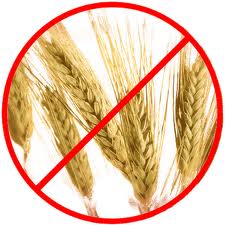 weight gain (or loss), dull coats, joint problems, arthritis, poor behavior, seizures and skin problems such as itching and excessive shedding and cause irritable bowel problems along with diarrhea or constipation and eye and ear infections.
weight gain (or loss), dull coats, joint problems, arthritis, poor behavior, seizures and skin problems such as itching and excessive shedding and cause irritable bowel problems along with diarrhea or constipation and eye and ear infections.
Grains may cause Diarrhea and preventable diseases such as Feline Diabetes, Pancreatitis, Chronic Renal Failure (CRF), Urinary Crystals, Cystitis (bladder inflammation), Bladder/Kidney Stones, Inflammatory Bowel  Disease (IBD), Hepatic Lipidosis (Fatty Liver Disease) and Cancer leading to premature death.
Disease (IBD), Hepatic Lipidosis (Fatty Liver Disease) and Cancer leading to premature death.
Grains are SOLELY used as cheap fillers/ingredients to boost protein levels instead of using high quality, much more expensive, human grade meat.
Grains are carbohydrates and are useless to carnivores. Slick marketing  ads and television commercials from pet food companies or from veterinarians who know absolutely nothing about animal nutrition will say that carbohydrates from “whole grains” are easy to digest, are good for your pets and give them “energy & vitality”.
ads and television commercials from pet food companies or from veterinarians who know absolutely nothing about animal nutrition will say that carbohydrates from “whole grains” are easy to digest, are good for your pets and give them “energy & vitality”.
Actually, carbohydrates do only one thing in cats and dogs: They only make your animal companions fat like they do in humans and are the cause of many serious illness and disease. But unlike humans, carnivores get their energy from proteins and fats, NOT from carbohydrates!
If grains are nutritionally useless to cats and dogs, then why are they in 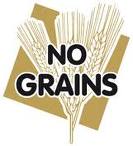 most pet foods? For one and only one reason – the huge profits for pet food companies and the veterinarians and retailers who sell these pet foods, because grains are so cheap compared to more expensive, human-grade meats!
most pet foods? For one and only one reason – the huge profits for pet food companies and the veterinarians and retailers who sell these pet foods, because grains are so cheap compared to more expensive, human-grade meats!
Here’s another very, very important point to consider: If you think the grains and rice in pet foods are of the human-grade kind like “Uncle Ben’s”, think again! The feed values of these grains are similar to corn and are grown 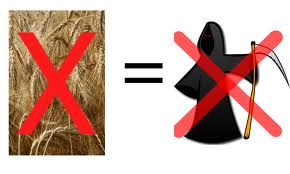 primarily as a feed grain for livestock, not for dogs and cats. Inexpensive feed-grade grains that used to go in landfills and are now in pet foods can include moldy grain or fungus which has caused death.
primarily as a feed grain for livestock, not for dogs and cats. Inexpensive feed-grade grains that used to go in landfills and are now in pet foods can include moldy grain or fungus which has caused death.
BARF (BIOLOGICALLY APPROPRIATE RAW FOOD) WORLD COMMENTS ON THE QUESTION OF GRAINS
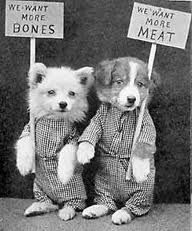 It would now appear that the apparently innocuous starch, widely regarded as a supremely safe and cheap source of energy, is not the sweet innocent food ingredient it appears to be! It is the emerging information on the role of starch in producing poor health that has put the last nail in the coffin holding the grain. Our dogs and cats, like ourselves should only eat those foods on which they evolved if they are to gain and maintain maximum health.
It would now appear that the apparently innocuous starch, widely regarded as a supremely safe and cheap source of energy, is not the sweet innocent food ingredient it appears to be! It is the emerging information on the role of starch in producing poor health that has put the last nail in the coffin holding the grain. Our dogs and cats, like ourselves should only eat those foods on which they evolved if they are to gain and maintain maximum health.
The biochemical/physiological basis for problems directly related to the ingestion of grains relates to blood insulin levels in response to blood sugar levels. The ultimate effects of high carbohydrate diets include swings in blood sugar and insulin, insulin resistance and high blood sugar.
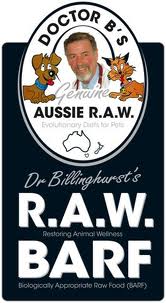 This in turn results in pathological alterations in eicosanoid production which in turn leads to obesity, hypertension, fluid retention, musculoskeltal, vascular, renal, hepatic, CNS and cardiac disease, and finally in many instances cancer. That is, the ingestion of grain and other starchy foods (including simple sugars of course) produces or helps in a major way to produce most if not all of the degenerative diseases.
This in turn results in pathological alterations in eicosanoid production which in turn leads to obesity, hypertension, fluid retention, musculoskeltal, vascular, renal, hepatic, CNS and cardiac disease, and finally in many instances cancer. That is, the ingestion of grain and other starchy foods (including simple sugars of course) produces or helps in a major way to produce most if not all of the degenerative diseases.
There are other factors which are involved, particularly when it comes to feeding commercial pet food, including a lack of protective factors, abysmally poor protein quality, the presence of toxins in abundance, and the almost complete absence of healthy fats.
In an evolutionary sense, a wild dog’s and cat’s diet contain no grains and they  never eat cooked grains! If the intestinal contents of their prey are eaten, there may be some grain which is usually immature and green. Most certainly they do not eat a grain-based diet like the modern dog and cat, subjected to a lifetime of dried cat and dog food. Even if their prey had been eating mature seed heads, by the time the grain is consumed, it has been ground to a paste and soaked in the juices of the herbivores intestines. A totally different product to the masses of cooked and processed grains fed to cats and dogs today which are often conaminated with deadly aflatoxins. See these comments and more on the BARF diet here.
never eat cooked grains! If the intestinal contents of their prey are eaten, there may be some grain which is usually immature and green. Most certainly they do not eat a grain-based diet like the modern dog and cat, subjected to a lifetime of dried cat and dog food. Even if their prey had been eating mature seed heads, by the time the grain is consumed, it has been ground to a paste and soaked in the juices of the herbivores intestines. A totally different product to the masses of cooked and processed grains fed to cats and dogs today which are often conaminated with deadly aflatoxins. See these comments and more on the BARF diet here.
WHAT THE EXPERTS HAVE TO SAY
Dr. Joe Demers, D.V.M – “A reason for overweight pets is what we feed 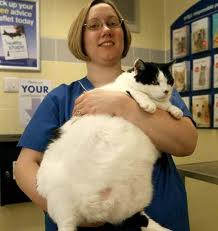 our pet friends. Commercial pet food is anywhere between 45 percent to 65 percent carbohydrates (grains). Grains are the least expensive part of pet food and can fill the animal quickly. Dogs and cats are more carnivores than we humans are, and we are feeding them almost as much grain (or more) than we humans eat. I feel that this high-carbohydrate commercial pet food is the worst food we can feed our pet friends. Our pet friends need fresh meats, not dehydrated meat by-products.” You can read Dr. Demers’ comments and get more great info on cat and dog nutrition here.
our pet friends. Commercial pet food is anywhere between 45 percent to 65 percent carbohydrates (grains). Grains are the least expensive part of pet food and can fill the animal quickly. Dogs and cats are more carnivores than we humans are, and we are feeding them almost as much grain (or more) than we humans eat. I feel that this high-carbohydrate commercial pet food is the worst food we can feed our pet friends. Our pet friends need fresh meats, not dehydrated meat by-products.” You can read Dr. Demers’ comments and get more great info on cat and dog nutrition here.
Dr. T.J. Dunn D.V.M. – “The biggest and most common misconception of all…..the promotion of some low priced, grain-based foods as being a “Complete and Balanced” diet  for dogs and cats! Having done physical exams on tens of thousands of dogs and cats and learning from their owners what these pets are being fed has taught me that dogs and cats look, feel, and perform better if they are fed a meat-based diet rather than if fed a corn, wheat, soy or rice-based diet.” You can read Dr. Dunn’s comments and get more great info on cat and dog nutrition here.
for dogs and cats! Having done physical exams on tens of thousands of dogs and cats and learning from their owners what these pets are being fed has taught me that dogs and cats look, feel, and perform better if they are fed a meat-based diet rather than if fed a corn, wheat, soy or rice-based diet.” You can read Dr. Dunn’s comments and get more great info on cat and dog nutrition here.
Dr. Russell Swift, DVM says “they are NOT part of the natural diet of wild dogs and cats. In the true natural setting, grains hardly exist at all. Why 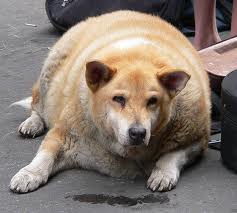 have grains become so “ingrained” in pet feeding? To the best of my knowledge, grains were mainly introduced by the pet food industry. The high carbohydrate content provides CHEAP calories.” You can read Dr. Swift’s comments and get more great info on cat and dog nutrition here.
have grains become so “ingrained” in pet feeding? To the best of my knowledge, grains were mainly introduced by the pet food industry. The high carbohydrate content provides CHEAP calories.” You can read Dr. Swift’s comments and get more great info on cat and dog nutrition here.
STILL THINK GRAINS ARE GOOD FOR YOUR PET CARNIVORES???
ALWAYS buy grain-free food for your pets and make sure  that ALL of the protein in the food is from human-grade MEAT!
that ALL of the protein in the food is from human-grade MEAT!
Good reading: Grain-Free Cat Food Reviews
“The unethical AVMA (American Veterinary Medical Association) unethical veterinarians and the unethical AAHA (American Animal Hospital Association) have all come out against feeding raw meat diets to carnivores (dogs) and obligate carnivores (cats) and instead recommend feeding kibble that has between 45% – 75% carbohydrates in the form of grains, corn, wheat and soy… there’s no words to describe how unbelievable this is… is there a more corrupt business than the pet industry?” asks Roger Biduk.








